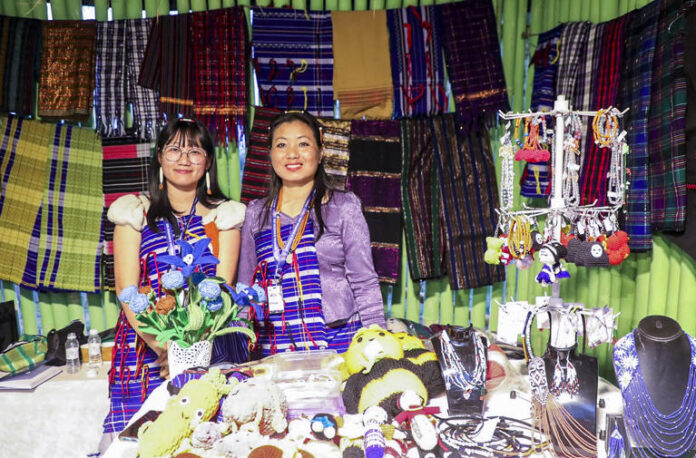The Arunachal GI Mahotsav 2025 recently illuminated New Delhi, offering a vibrant showcase of Arunachal Pradesh’s rich cultural tapestry. Held at Select City Walk, Saket, this inaugural Geographical Indication (GI) festival was a testament to the state’s commitment to preserving and promoting its unique heritage. Deputy Chief Minister Chowna Mein, the chief patron and visionary behind the festival, emphasized the pivotal role of GI in safeguarding products intrinsic to specific regions.
A Celebration of Craftsmanship
Arunachal Pradesh’s textiles are a vivid reflection of its diverse tribal communities, each weave narrating tales of tradition and identity. The festival featured an array of these intricate fabrics:
- Apatani Textiles: Originating from the Apatani tribe, these textiles are renowned for their geometric patterns and natural dyes, symbolizing harmony with nature.
- Monpa Textiles: Crafted by the Monpa tribe, these weaves are distinguished by their vibrant colors and intricate motifs, often inspired by Buddhist iconography.
- Nyishi Textiles: The Nyishi community’s textiles are characterized by bold patterns and earthy tones, reflecting their robust connection to the land.
Each piece not only showcased the artisans’ meticulous craftsmanship but also highlighted the cultural narratives embedded within these fabrics.
Artistry in Handicrafts
The festival’s handicraft segment was a treasure trove of Arunachal’s artisanal excellence:
- Monpa Handmade Paper: An age-old craft, this paper is made from the bark of the local sukso tree. Its resilience and texture make it ideal for religious scriptures and traditional paintings.
- Arunachali Dao (Sword): More than a weapon, the Dao represents the valor and heritage of Arunachal’s tribes. Crafted with precision, its design varies across communities, each adding unique embellishments.
- Tangsa Textiles: The Tangsa community’s textiles, known for their intricate patterns and vibrant hues, were also part of the exhibition, reflecting the rich weaving traditions of the region.
These handicrafts not only serve functional purposes but also embody the artistic spirit and cultural ethos of the state’s diverse tribes.
A Culinary Expedition
No celebration of Arunachal’s culture would be complete without its gastronomic delights:
- Singpho Phalap (Tea): An organic, smoked tea from the Singpho tribe, Phalap offers a unique flavor profile, reflecting the tribe’s deep-rooted tea culture.
- Adi Apong (Rice Beer): A traditional beverage of the Adi tribe, Apong is a mildly alcoholic drink made from fermented rice, often enjoyed during festivals and communal gatherings.
- Marua Apo (Millet Beverage): This millet-based drink is a staple among various tribes, known for its refreshing taste and cultural significance in rituals.
Visitors indulged in these authentic flavors, gaining a sensory insight into the state’s culinary traditions.
The Essence of Geographical Indication
Geographical Indication tags are more than just markers; they are endorsements of authenticity, quality, and cultural significance. For Arunachal Pradesh, securing GI tags for its indigenous products serves multiple purposes:
- Economic Empowerment: GI certification can enhance marketability, ensuring artisans and farmers receive fair value for their products.
- Cultural Preservation: Recognizing traditional crafts and foods helps preserve age-old practices, preventing them from fading into obscurity.
- Intellectual Property Rights: GI tags protect these products from unauthorized use, ensuring that only genuine items from the region bear the name.
The festival underscored the importance of these certifications in promoting and protecting the state’s unique offerings.
A Vision for the Future
The success of the Arunachal GI Mahotsav 2025 has set a precedent for future initiatives aimed at cultural preservation and promotion. By bringing the state’s diverse heritage to the national forefront, the festival not only celebrated Arunachal’s traditions but also fostered a deeper appreciation among a broader audience.
Deputy Chief Minister Chowna Mein’s vision encapsulates a future where Arunachal’s cultural assets are recognized globally, ensuring that the legacy of its artisans, weavers, and culinary experts continues to thrive.
In conclusion, the festival was more than an exhibition; it was a heartfelt narrative of Arunachal Pradesh’s identity, resilience, and unwavering pride in its heritage.




